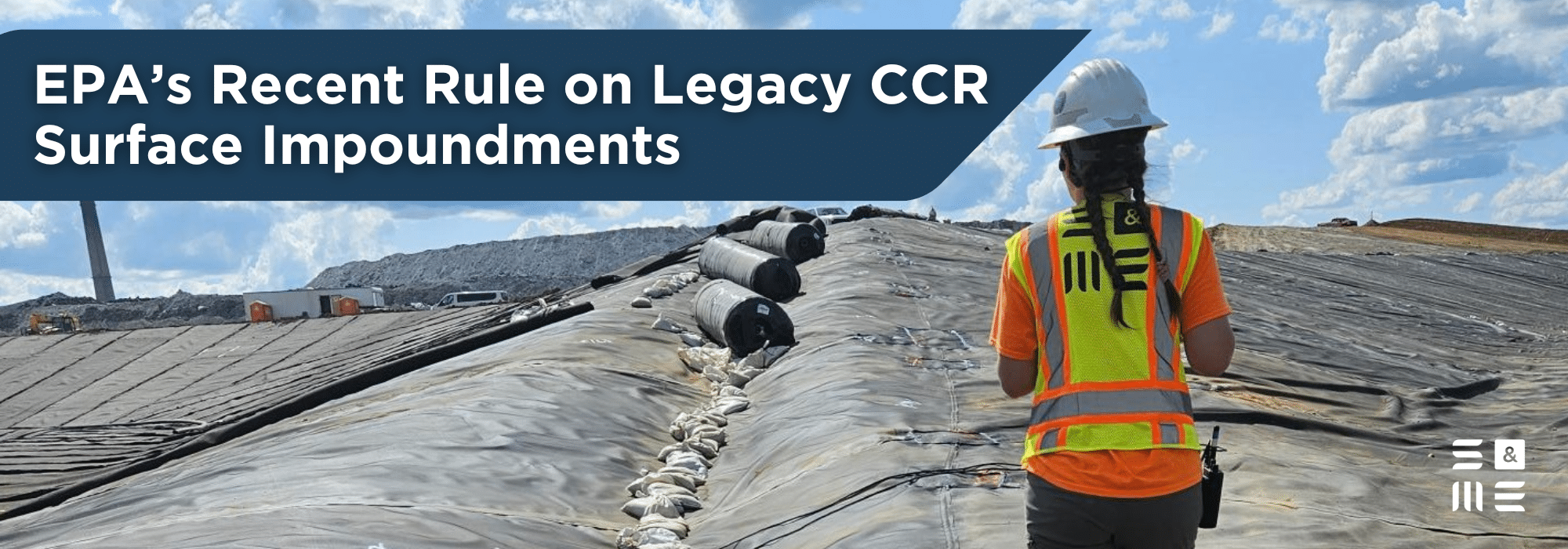Understanding the EPA’s Recent Final Rule on Legacy CCR Surface Impoundments: What You Need to Know
September 11, 2024

Coal ash, a byproduct of burning coal for electricity, has been a source of environmental concern. Its management is critical due to its potential to contaminate groundwater and pose risks to public health. In May 2024, the U.S. Environmental Protection Agency (EPA) finalized a new rule that aims to address these issues more effectively by targeting legacy coal combustion residuals (CCR) impoundments and management units. This rule will be effective by November 8, 2024. Check out the EPA’s Fact Sheet.
Who is Affected?
The new rule applies to disposal of CCR in landfills and inactive facilities known as legacy surface impoundments, including those that have been in operation for years but are now subject to updated regulations. A legacy CCR surface impoundment refers to “… a CCR surface impoundment that no longer receives CCR but contained both CCR and liquids on or after October 19, 2015, and that is located at an inactive electric utility or independent power producer.”
Specifically, the rule encompasses inactive power plants with surface impoundments that are no longer being used and historical coal ash disposal areas at active power plants. This rule applies to historical contamination and inactive units that no longer support current power plant operations.
Compliance Requirements:
As referenced by EPA, legacy CCR surface impoundments are more likely to be unlined and unmonitored, making them more prone to leaks and structural problems than units that are currently in service. To address these concerns, with this final rule, EPA is creating safeguards for legacy CCR surface impoundments that largely mirror those for inactive impoundments at active facilities, including requiring the proper closure of the impoundments and remediating CCR-contaminated groundwater.
- Tailored Compliance Deadlines: The rule introduces specific deadlines tailored to the type of CCR management unit. These deadlines are designed to provide facilities with adequate time to meet the new requirements while ensuring prompt action on environmental and safety concerns.
- Groundwater Monitoring and Corrective Actions: Facilities will be required to implement comprehensive groundwater monitoring programs. If contamination is detected, corrective actions must be taken to address the issues and prevent further environmental impact.
- Closure and Post-Closure Care: The rule establishes clear requirements for the closure of CCR management units, including measures to ensure that sites are properly decommissioned and maintained in a safe and environmentally sound manner. Post-closure care plans must be developed to manage the site long-term.
Next Steps for Affected Facilities
To prepare for the November 8, 2024 effective date, facilities should begin by reviewing the new rule’s requirements in detail. Developing a compliance strategy, updating monitoring systems, and consulting with environmental experts can help ensure a smooth transition to the new regulations.
S&ME Services
At S&ME, our energy team offers comprehensive services to help facilities navigate the complexities of environmental regulations including:
Landfills
- Planning and Siting Studies
- Design and Permitting
- Operations and Phasing Evaluations
- Environmental Permitting for Impacts
- Construction Testing and Certification
- Geosynthetics Evaluation
- CCR Rule Evaluation
- Inspection Services
Ash Ponds
- Assessments including H&H and Geotechnical
- Potential Failure Mode Analysis
- Design and Permitting
- Evaluation of Sloughs and Seeps
- Repair Design-Stability
- Spillway Replacements
- Closure Planning and Design
- Construction Testing and Certification
- Construction Quality Assurance
